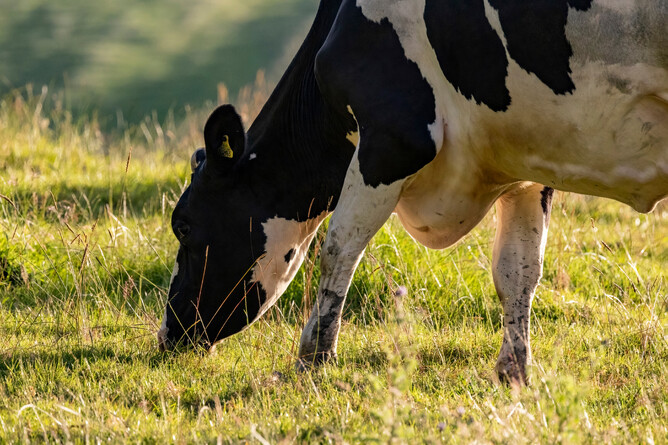You’ve probably all seen cows with facial eczema (FE) damage; poor animals with peeling skin desperately seeking shade.
The fungal spore that causes facial eczema requires dead vegetable matter, warmth and moisture to thrive. Once eaten, the spores produce mycotoxins that cause the cow to process Chlorophyll (the green pigment in plants) differently, resulting in liver damage and photosensitivity – think English tourist on a Spanish beach levels of sunburn!
The best way to prevent facial eczema is with zinc. Zinc binds with the mycotoxins to form a stable compound which no longer affects the animal.
Aim to have sufficient zinc in the bloodstream to provide protection against FE throughout the high-risk period. Typically, this is late January to late March. We can get zinc into stock via a bolus, water or feed.
Bolus – e.g. Face-Guard
The application of boluses are labour intensive, but they release a known amount of zinc for a sustained period, so they offer cows the best protection against FE. A bolus provides 4-6 weeks protection and can be repeated twice if necessary.
Water – e.g. Solutrace FE
Water additives contain a good percentage of zinc, in addition to other minerals such as boron, cobalt, copper, iodine and selenium. This means they provide FE protection while also giving trace element supplementation. Soluble minerals can be added into the water through a Dosatron or trough dispensers. Whilst convenient, they can struggle to reach protective levels against FE if the cows are not drinking enough.
Feed
If supplementary feeds are being given through the shed or feed pad, powdered zinc can be added to the ration. This is often more reliable than water additives as feed intake is more consistent. Feed and water options can be used together to provide reliable levels of zinc to protect against FE during the risk period.
The challenge with zinc is that it competes with copper for uptake in the gut. This means copper can’t be supplemented effectively at the same time (unless it is chelated copper) and cows may become low in copper over the facial eczema season.
It is for this reason that we advise avoiding starting zinc supplementation too early and don’t recommend repeating a bolus unless required.
Keeping an eye on FE spore counts allows us to anticipate when we should recommend starting zinc prevention. Ideally, farms would begin as spore levels are rising in order to get up to protective levels in time to meet the threat.
Have a chat to us about getting some grass samples tested to see what spore levels are like on your farm and get your zinc treatments, such as boluses or water additives, from our in-clinic farm supplies shop.

